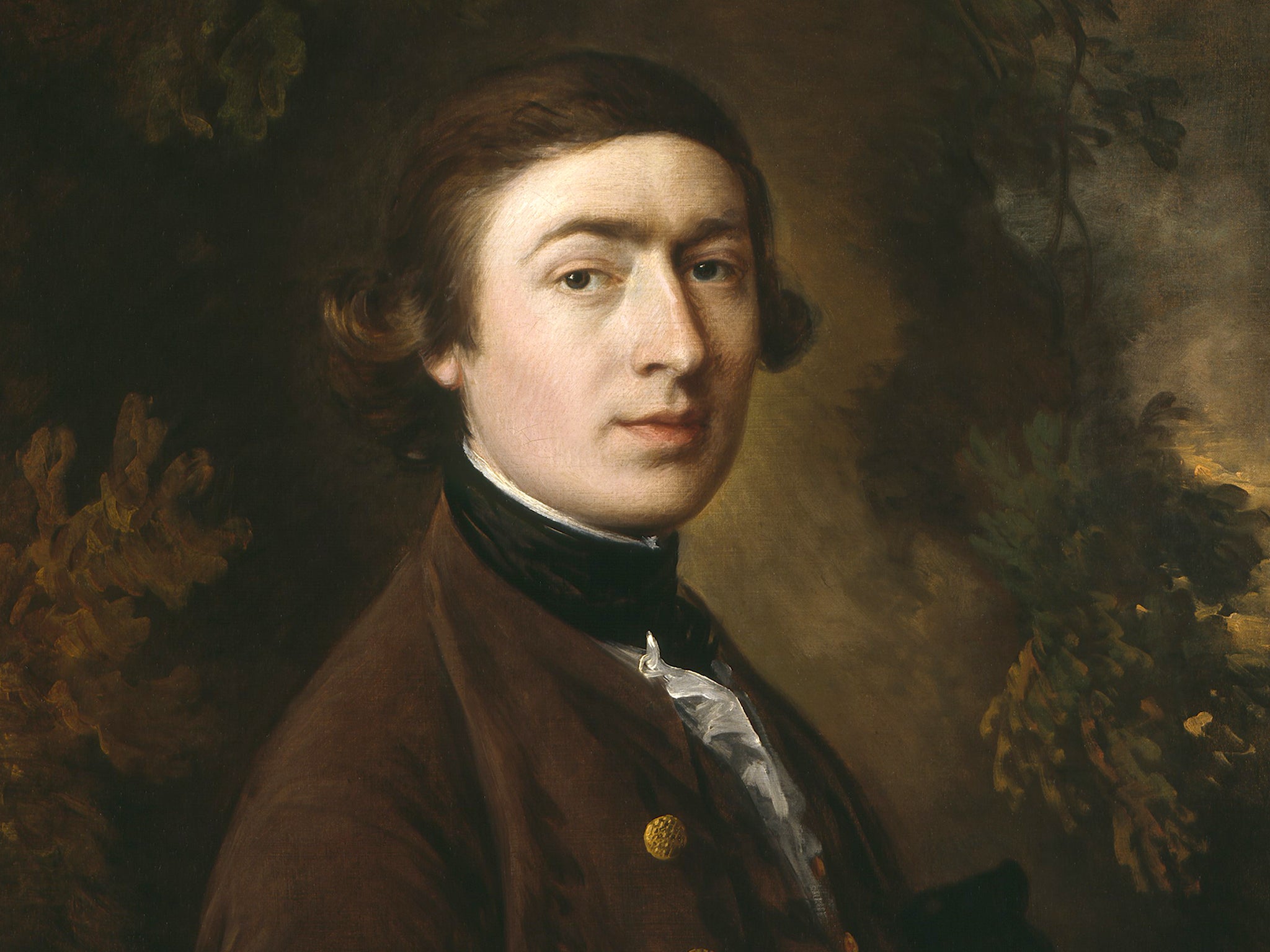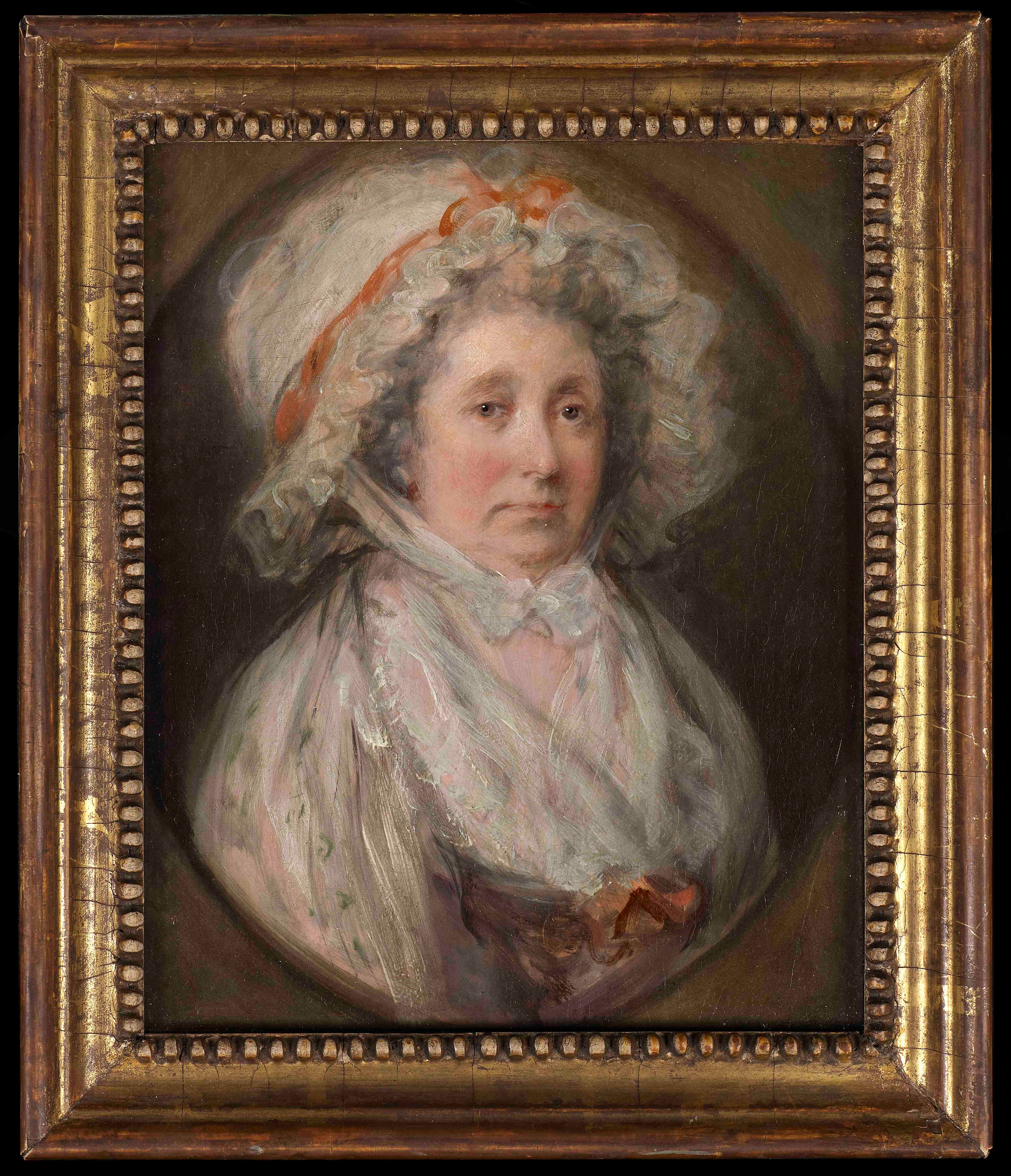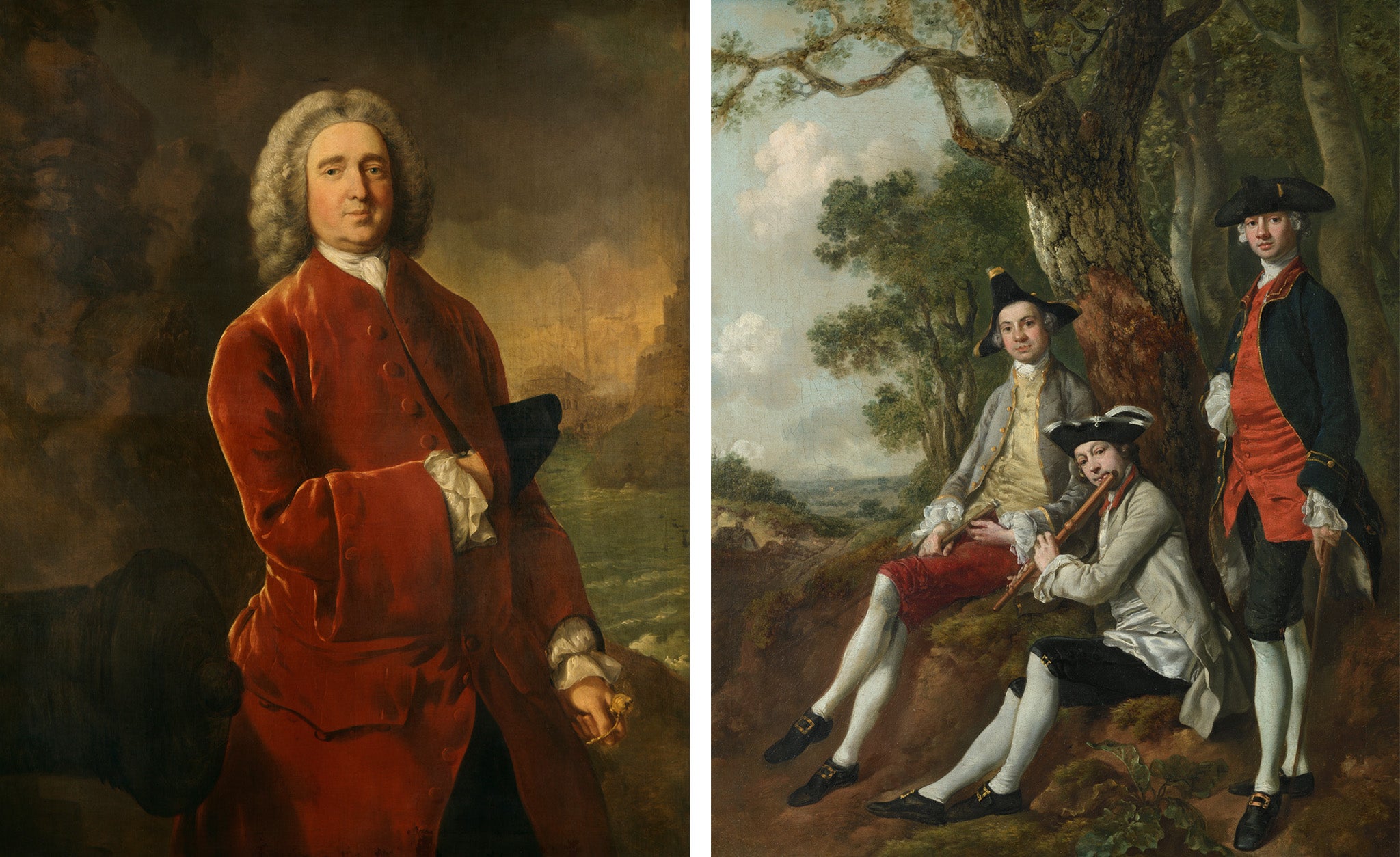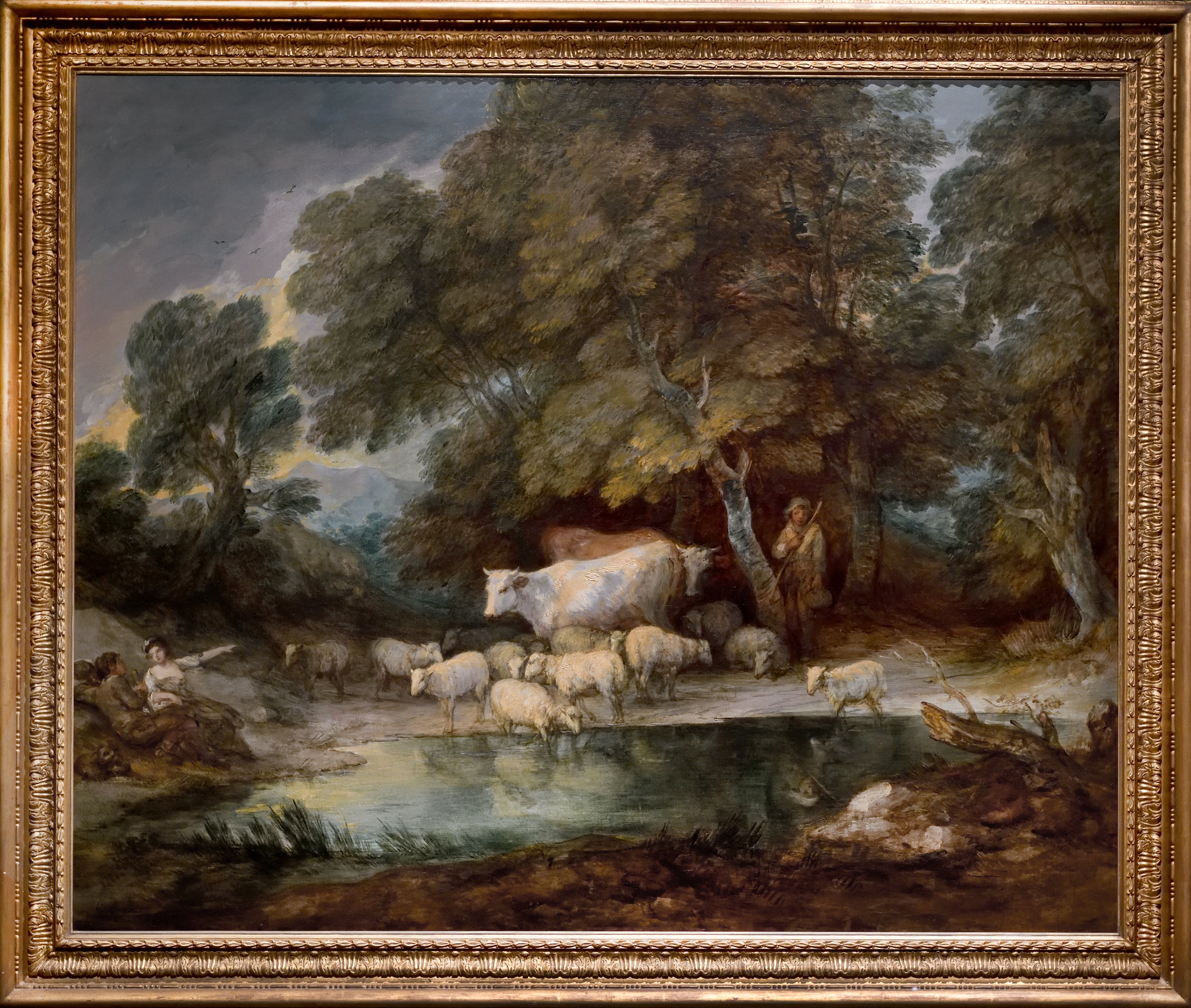The understated genius of Thomas Gainsborough – one of Britain’s greatest portrait artists
William Cook visits the new gallery in Suffolk that he believes finally does justice to the unique art of a renowned painter


Down a quiet side street in Sudbury – a historic market town in Suffolk – a new gallery has just opened devoted to the man I believe is Britain’s greatest portrait painter.
Gainsborough’s House has been a museum for some 60 years, but it used to be a sleepy place – quaint and atmospheric, yet rather underwhelming. Now it’s been rejuvenated by this striking modern building. Nearly 300 years since he was born, in the antique house that adjoins this gallery, Suffolk finally has a fitting forum for Thomas Gainsborough’s unique art.
Built in a bold contemporary style, this new gallery is a dramatic contrast to Gainsborough’s birthplace. The house where Gainsborough was born dates back to the 15th century. It’s cosy and somewhat claustrophobic, as ancient buildings often are. The new building is airy and spacious, flooded with natural light. From the top floor, you get a great view of Gainsborough’s House and the woods and fields beyond, but the best thing is the art within. Here, you can see the portraitist in an entirely new light.
Gainsborough started out painting people from his own social circle, but as his reputation grew, his clients became richer and more remote. The later portraits that ended up in bigger galleries tend to be of aristocrats, even royalty. They’re wonderful paintings, but inevitably they feel more aloof. In Sudbury, you see his more intimate early portraits, paintings of unpretentious middle-class strivers, rather than self-entitled toffs.
Many of these early portraits are awkward, even clumsy. James Hamilton, author of the engrossing biography, Gainsborough – A Portrait, calls them “rich in errors of scale, perspective and composition.” How reassuring to discover that even Gainsborough, one of the most technically proficient artists of his age, had to work so hard and fall so short before he eventually hit his stride. However, even in these early efforts there’s something which sets them apart from portraits by more accomplished artists. So what is that star quality which separates Gainsborough from other portraitists? I believe it can be summed up in two words: compassion and insight.
Gainsborough had that intuition which is common to all leading portrait painters. He could discern the personality of his sitters. He could convey how they were feeling. What made him truly great was his sympathy for his subjects. Even in these fledgling portraits, that compassion is already there. “You look at a portrait and it still lives,” says Mark Bills, the director of Gainsborough’s House. “They’re alive to people today.”

Thomas Gainsborough was born in Sudbury in 1727, the youngest of nine children. He showed an early aptitude for drawing, especially out of doors, and making farmyard animals out of clay. As a pupil at the local grammar school, he forged a letter from his teacher to his father, saying: “Give Tom a holiday.” He didn’t want a day off so he could play at home. He wanted to go sketching in the countryside. “Tom will one day be hanged,” declared his father, John (forgery was a capital offence in those days), but when he saw his son’s drawings, he recognised his nascent talent.
John Gainsborough was a cloth merchant (the main industry in Sudbury), but he was a poor businessman, and in 1733, when Tom was six years old, he went bankrupt. Luckily, Tom’s uncles were far better businessmen than his father, so they were able to bail him out and get him a sinecure as the local postmaster, which paid just enough to keep him solvent. Thanks to them, Tom and his siblings were able to stay on in this handsome house, which was really far too grand for their feckless, spendthrift father.
In 1739, one of young Tom’s prosperous uncles died suddenly and left him £20 (worth around £3,500 today) to pay for an apprenticeship. So, when he was 13, Tom went to London where he studied under the highly successful French engraver Hubert Gravelot. In 1748, John Gainsborough died, whereupon Tom, now 21, returned to his childhood home in Sudbury to make his living as an artist.

Gainsborough returned home with a wife, called Margaret, the illegitimate daughter of the Duke of Beaufort, from whom she received an annuity of £200. This was a decent middle-class wage in Gainsborough’s day and, for an aspiring artist, it was a godsend. It wasn’t quite enough to live in comfort, but it enabled him to build a career as a portrait painter, rather than hustling for hack work to pay the bills. It would be unfair to say he married her solely for her money – they loved each other and had a long and relatively happy marriage – but it did his career no harm at all.
Margaret managed the family finances and kept her husband on the straight and narrow. He had a roving eye and he liked a drink. Thanks to Margaret’s stern and steady influence, wine, women and song was an occasional indulgence rather than a regular occurrence. Without her guiding hand, he might never have fulfilled his early promise.
The couple had two daughters, Molly and Peggy, both born in Sudbury. The fact that Gainsborough only had two children (a small family in those days) was another blessing. He was devoted to his daughters, the subjects of some of his most moving portraits. In 1752, the Gainsboroughs moved to Ipswich, a bigger, richer town and a better market for portraits than provincial Sudbury. Here he cultivated the acute yet florid style which would make him famous. However, he only became a star when he moved his young family to Bath, in 1759.

During the 18th century, Bath was one of the most fashionable spa towns in the whole of Europe, a home from home for Britain’s wealthiest families, who often stayed for months on end. The town’s thermal springs were claimed to cure all sorts of ailments, and although the medicinal benefits were probably negligible, the presence of these rich patients attracted loads of hangers-on, creating a thriving social scene. It was the ideal location for an ambitious portraitist. By the time Gainsborough left for London, in 1774, he was one of the leading artists in the land.
Gainsborough spent the last 14 years of his life in London, where his work went from strength to strength. By now his only competitor was Sir Joshua Reynolds, the other great portraitist of the age. Gainsborough’s style is perhaps more fluid and free-flowing (“his technique is supreme and effortless,” says Bills) and both men have insight, but I believe Gainsborough has more compassion. They both understand their subjects, but Gainsborough really cares.
The two men knew each other, and respected one another’s work, but there was also a good degree of rivalry, which prevented them from becoming close friends. “They were head and shoulders above any other portrait painter, so of course they were rivals!” says Bills. “Reynolds was Mr Establishment – Gainsborough a mercurial genius.” As the junior partner – at least in terms of social standing – this jealousy was sharper on Gainsborough’s side.

Reynolds was a brilliant portraitist, but his pre-eminence was due mainly to his diplomatic skills, skills that Gainsborough sorely lacked. An assiduous networker, Reynolds was the president of the Royal Academy, which gave him unrivalled opportunities to control the careers of other artists and promote his own work. Unlike Gainsborough, he won a knighthood and became the principal painter to King George III – the artistic equivalent of the poet laureate – even though the king preferred Gainsborough’s paintings and liked his company better too. Gainsborough got on very well with George III, but he was far too outspoken to knock Reynolds off his perch.
“There was something very British about Gainsborough,” says Bills. Unlike Reynolds, he didn’t travel to Italy to study the Renaissance masters, regarded as essential training for any serious artist in the 18th century. Apart from a short trip to Antwerp, late in life, it seems he never went abroad. Reynolds dazzles the viewer, but Gainsborough seems more vulnerable, more humane. “You can admire Reynolds, but you can love Gainsborough.”
Gainsborough was a grudging member of the Royal Academy (RA), in which Reynolds called all the shots, and he fell out with the RA on several occasions, most notably over the hanging of his paintings in the RA’s exhibitions. Gainsborough was furious that his paintings were hung “above the line” – above the more prominent paintings which were hung at eye level.

This sounds like a trivial complaint, but in those days it was a big deal. If a painting was hung at eye level, that indicated the RA’s selectors regarded it as first class. If it was hung “above the line” that meant they saw it as second-rate. Every visitor would have recognised the significance of this distinction. For an artist of Gainsborough’s calibre, it was a calculated insult, and he was quite right to be upset. Reynolds would have found a discreet and subtle way to reposition his paintings more favourably, but there was nothing subtle or discreet about Gainsborough. He withdrew his paintings from the show and exhibited them in his home and studio in Pall Mall instead.
Gainsborough hated having to genuflect to rich opinionated patrons, those “confounded ugly creatures” with more money than artistic sense. “Damn gentlemen, there is not such a set of enemies to a real artist in the world,” he declared. “I know they have but one part worth looking at, and that is their purse.” However, he never pandered to his paymasters. He painted people as he saw them, and that’s what makes his portraits live and breathe.
Gainsborough’s first love was landscape painting, but when he was starting out there was no money in it, and when he became established, he always had a queue of wealthy sitters hammering on his door. He dreamt of quitting this “curs’d face business” and escaping to the countryside, to paint the meadows he’d enjoyed sketching as a boy. “I’m sick of portraits and wish very much to take my viol de gamba [a kind of cello – he was a keen amateur musician] and walk off to some sweet village where I can paint landskips [sic] and enjoy the... end of life in quietness and ease.” It was not to be. He died in London, of cancer, in 1788. He was 61, a decent innings back then, but he still had more painting in him. His final pictures are among his finest.

Gainsborough knew he was ailing. “I shall die soon,” he told his friend, the playwright Richard Brinsley Sheridan. “I know it – I feel it. I have less time to live than my looks infer.” Mindful that time was short, he made his peace with Reynolds, declaring his admiration for his only rival as a portrait painter. He told Reynolds he regretted leaving the world just when he thought he had discovered something new. “He was pivotal in the development of British art,” says Bills. “When he started painting in the 1740s, the state of portrait painting, the state of landscape painting, it was pretty much in its infancy in Britain – when he died, in 1788 it was utterly transformed.”
There are plenty of Gainsboroughs in London, in the National Gallery and the National Portrait Gallery, so why come to Sudbury? Because this collection puts his work in context, in the house where he spent his early adulthood, where he was born and raised. Here you see his paintings in situ, in the building where he painted them.
And they mean so much more in this house than in a municipal gallery. Here you feel so much closer to the man who made them. You get a sense of the world he inhabited, the life he lived, how he thought and felt. There’s an old mulberry tree in the garden that was here when he was a boy.
There are so many masterpieces to enjoy: a sublime self-portrait, painted in the springtime of his career; those tender portrayals of his daughters Molly and Peggy and a penetrating study of his nephew and assistant Gainsborough Dupont.
After all those years away from Suffolk, seeking his fame and fortune, it feels as if Tom Gainsborough has finally come home.
Gainsborough’s House, Sudbury, Suffolk (www.gainsborough.org)




Join our commenting forum
Join thought-provoking conversations, follow other Independent readers and see their replies
Comments